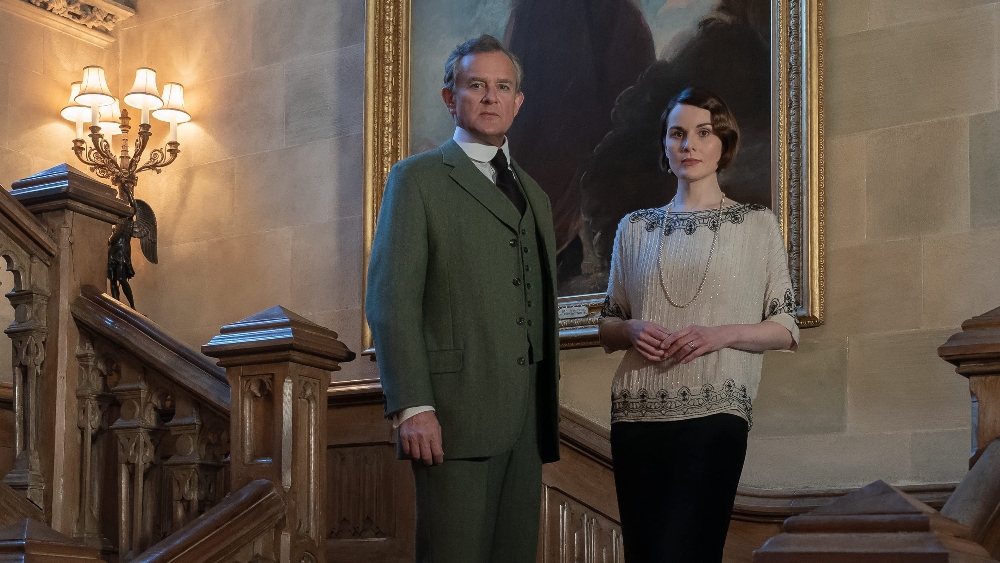
Downton Abbey: A New Era hits U.S. theaters this weekend three years after the first film grossed nearly $100 million at the domestic box office. Both films are, of course, based on the popular British series that ran for six seasons on ITV overseas and on PBS in the States.
Directed by Simon Curtis, A New Era once again follows the Crawley family, though they’re split in two this time, with half of the family traveling to the South of France to a villa that the Countess Dowager (Maggie Smith) unexpectedly inherits as the other half hosts a crew of Hollywood outsiders (including Hugh Dancy, Dominic West, and Laura Haddock) looking to shoot a movie on Downton’s hallowed grounds.
While the cast and their characters have always been terrific and have long been acknowledged as such, Downton Abbey continues to boast excellent below-the-line values that often go overlooked, as noted in my review of the film last month. That includes the wonderful outfits in A New Era, which come courtesy of costume designers Maja Meschede and Anna Robbins.
Meschede was in charge of the costumes for the “Old Hollywood” characters mentioned above, while Robbins, who has been with Downton since its fifth season, was in charge of dressing up the Crawley family and their servants, including those who venture beyond their traditional comfort zone to the sunnier South of France.
Last week, Below the Line spoke to both Meschede and Robbins about the impressive work they did on A New Era, whose large ensemble cast allowed the two talented costumers to show off a wide range of design elements. Read on for more…
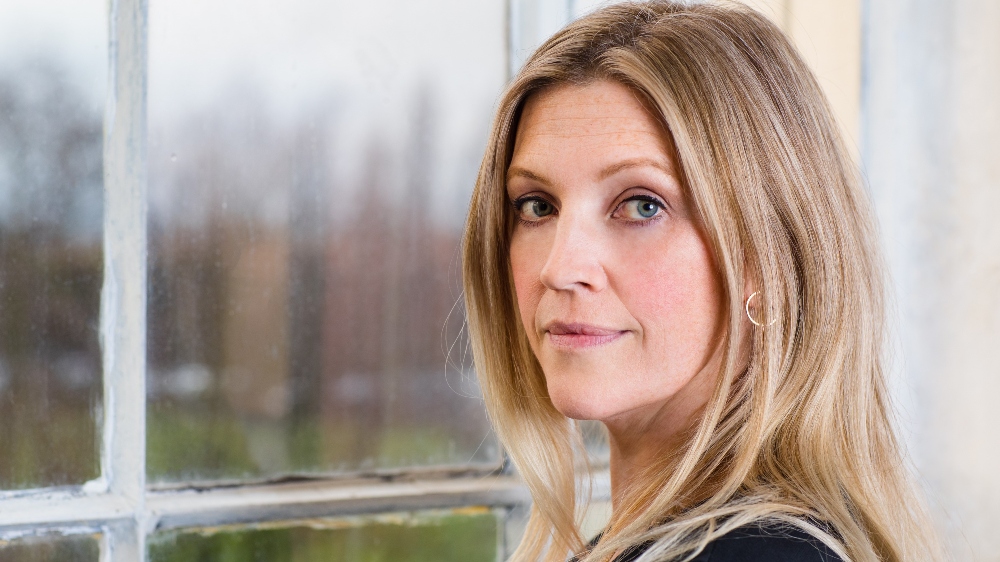
Below the Line: How do you approach working on a film that comes with a legacy behind it, such as a TV series and a prior feature?
Anna Robbins: It’s very interesting when there’s such heritage with the brand. The characters are well-known and well-liked. You have to try to remind yourself to do the same work. So I did the same steps — the franchise has moved on a couple of years so the fashion had changed. And you do fashion-specific, character-specific, and plot-specific research. [Screenwriter] Julian Fellowes had [written] such a great script with complex new characters, and it permitted us to do a very nuanced look. Of course, I’m lucky to have a shorthand with the characters and know them, [so I] can design instinctively for them. I can spot a vintage piece from a mile away that fits their body, so that’s good. But the research and all that is the same you do as in any process.
My general goal has always been to set the bar higher and higher. Downton has always done that and all of our departments have always worked hard to create something that is greater than the sum of its parts, and [they] pay even more attention to the detail because the costumes would be seen on a bigger scale. It was always about challenging ourselves to do what we had done previously, but even better.
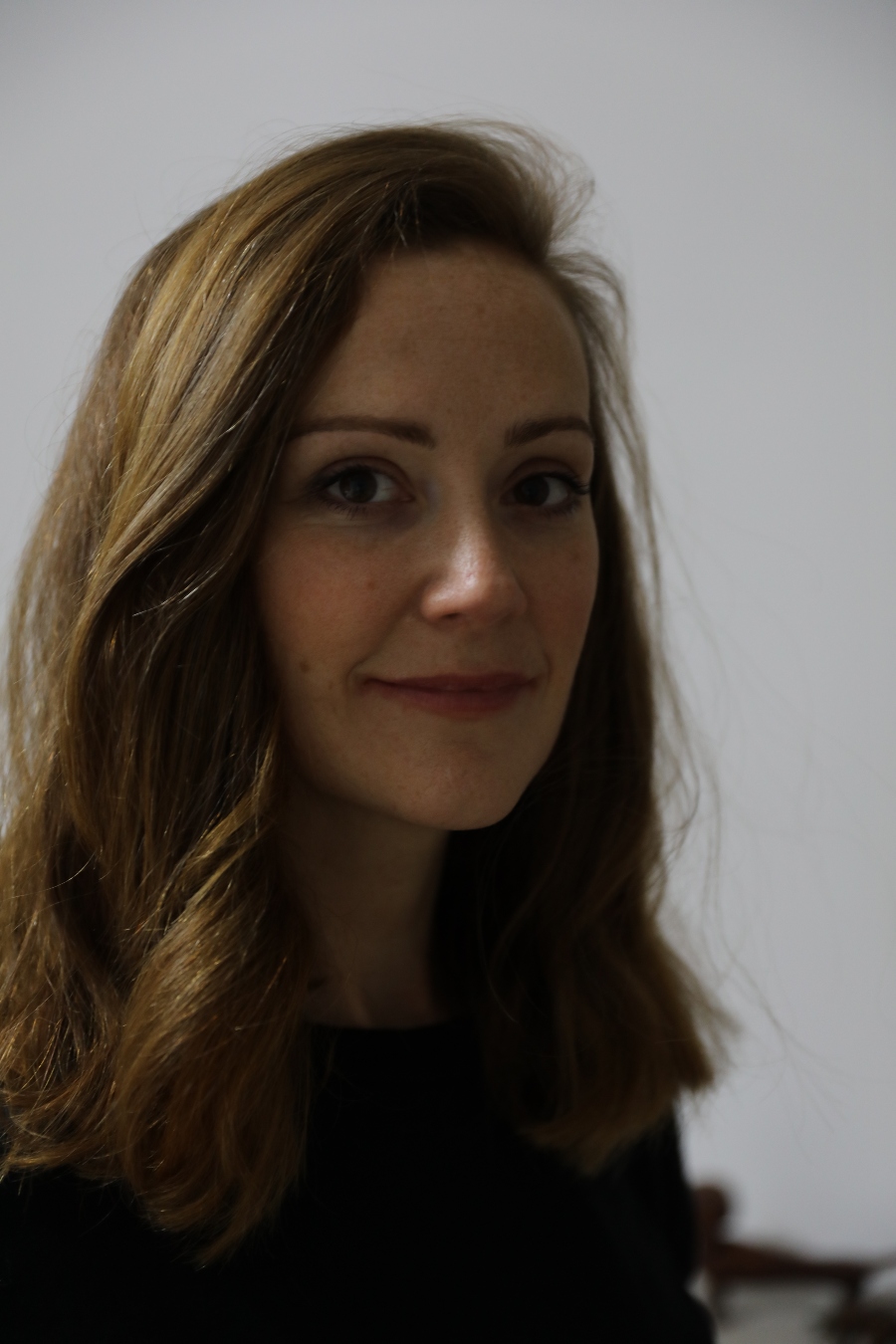
Maja Meschede: My focus was on these three new characters and all the agents that come in with them — Hugh, Dominic, and Laura. It was really important for me that they fit in, but also that they don’t fit in, as they are new. Laura had a very icy blue palette, and her costumes were over the top compared to the Downton cast, [which] is so elegant and aristocratic. I really wanted her to stand out. And her jewelry was purposefully never matching the color of the clothes she was wearing because while she may be a Hollywood star, she is from another background. She’s a diva and somehow doesn’t come out really nice, has all these insecurities. I wanted her to stand out and take the center of attention because of these things: “Here I am, running the show.” That’s why we used cold colors for her, some acidic green, to distance herself emotionally from everyone there. It’s how she feels being there, not knowing how her future will be with the movies having sound. She also wears gloves, to show that distance, that separation.
BTL: Anna, talk us through what the Crawleys were wearing in France?
Robbins: France was particularly exciting. The whole setting was going to change. The lighting, the backdrop, the exterior spaces, all different. Costumes inhabit space and have to fit in that space. When I read the script and realized that the story moves between Downton and the Riviera, and this lovely intertwining of the storylines, I wanted to contrast tonally. We were looking at beautiful Neapolitan colors and sordid hues in the daywear in France. The weights of the fabrics are diaphanous, the gentlemen are in these wonderful silky suits, which were a good counterpart to the women’s colorful suits. It was reversed from in Downton, where the color schematic is reversed. It’s always about pairings and creating ensembles, but France was a lovely lightening of the clothing. We had double-breasted suiting so we could dispense with waistcoats. We also had it in our tuxedos and linen suits for the gents.
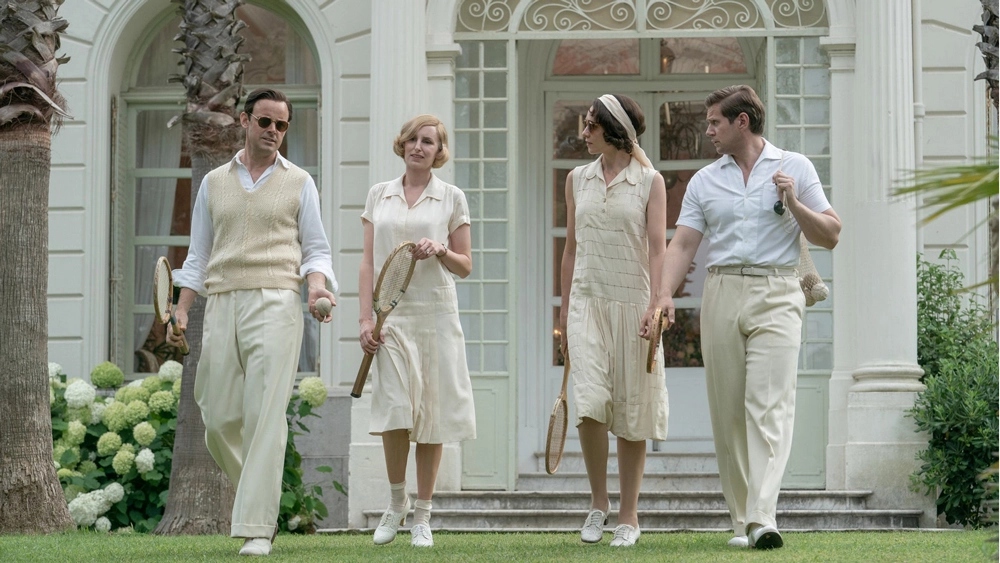
BTL: Give us the details of how you created one character on the way to France?
Robbins: We had Robert [Crowley, played by Hugh Bonneville] in ‘separates,’ which felt like we were moving ahead with him. He’s in this Grenadier Guards blazer, for when he is actually traveling to France. He has a regimental tie, a grey flannel tie. He has moved from felt to straw in terms of his hat, and it’s like he has arrived. He’s the quintessential English gentleman abroad.
BTL: Maja, give us the details of Dominic West’s character.
Meschede: He’s a Hollywood actor. He hangs out with Charlie Chaplin and Cary Grant. So I spoke to Dominic and we wondered what Cary may have looked like, and went for that. So he has this off-white, impractical, pinstriped suit — it conveys someone who is really making an effort to call attention to himself. Like with Laura, we wanted to show that he had just stepped out of Hollywood and right into Downton. We wanted him to stand out so his color palettes were greens and white.
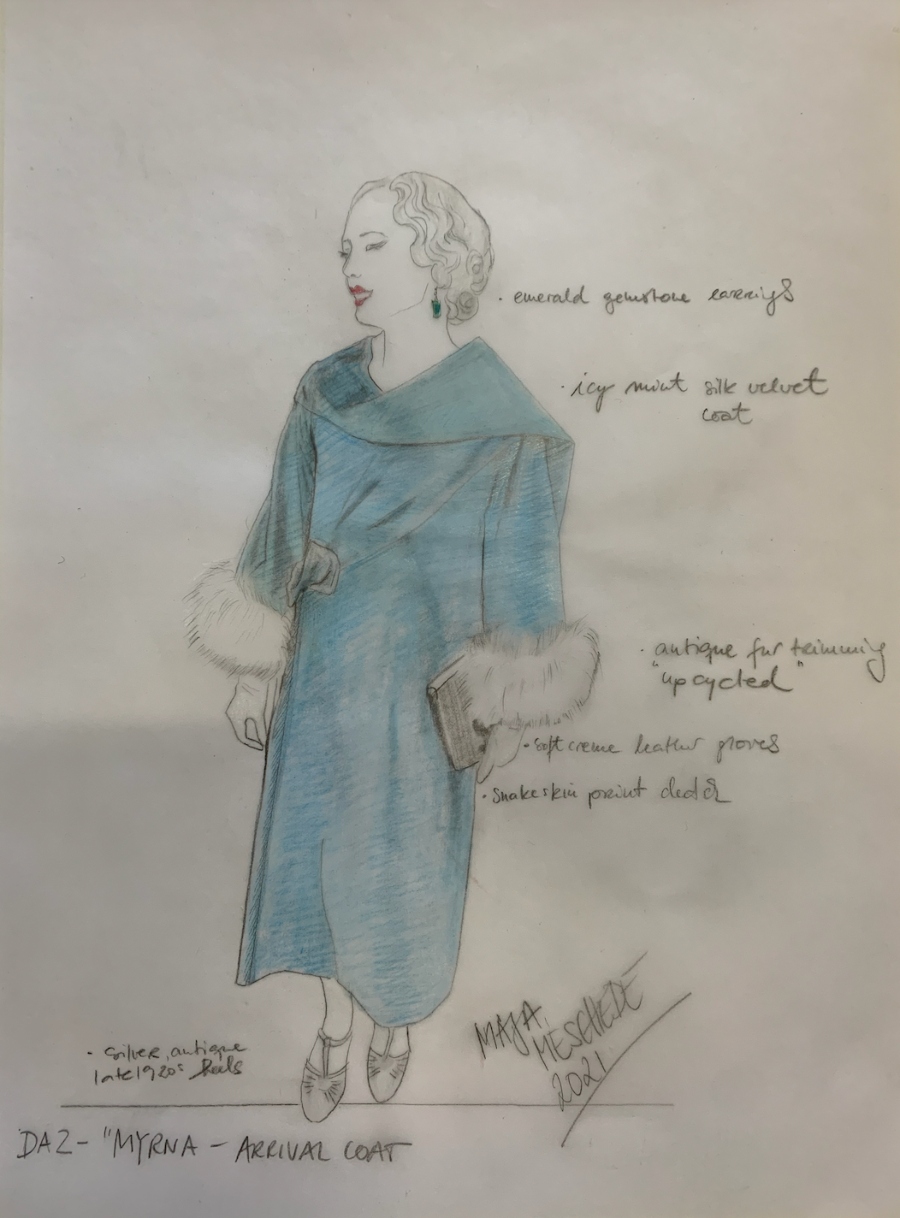
BTL: The show started in 1912, and now it’s 1928, so what changes in fashion have we seen by that point?
Robbins: Huge changes. In terms of women’s wear, hemlines have gone up, but towards the 1930s, they actually go down a little. Waistlines dropped down low, disappeared for a little period in 1927-1928, and they come back in and things start being belted, and with form again, as we get to the 1930s. I used the opportunity being in 1928 to really look at what was going to come in the future — being able to tease out the really striking changes that are afoot fashion-wise. It’s “a new era” after all. We have Lady Edith in trousers in the Riviera, it just felt like that right moment to put her [in those]. Edith would embrace that sort of liberal, forward-looking taste. We put Lady Mary in pajamas — beautiful originals, by the way — and we had never had that before, and she would always want to be cutting-edge. We also added waspy belts on her dresses, alongside the typical 1920s dresses. We explored a lot.
Meschede: I agree, and for me and my crew, like for Anna, authenticity is critical. And with 20th Century costumes, you can go all over the place. You can get really beautiful pieces of clothing that are still intact, as [they’re] made from very delicate silks. A lot of that is still out there to buy, all over Europe — Italy, France, and even Germany. Sometimes we used leftover garments and reconstructed the costumes. But we did find a lot of original fabrics from 1928, which was not easy to do with [the] lockdown. We found 1920s flowers, jewelry, and fabrics, and it’s remarkable how much and how quickly fashion changed back then. But Downton has been here for 11 years and being a part of this family was lovely.
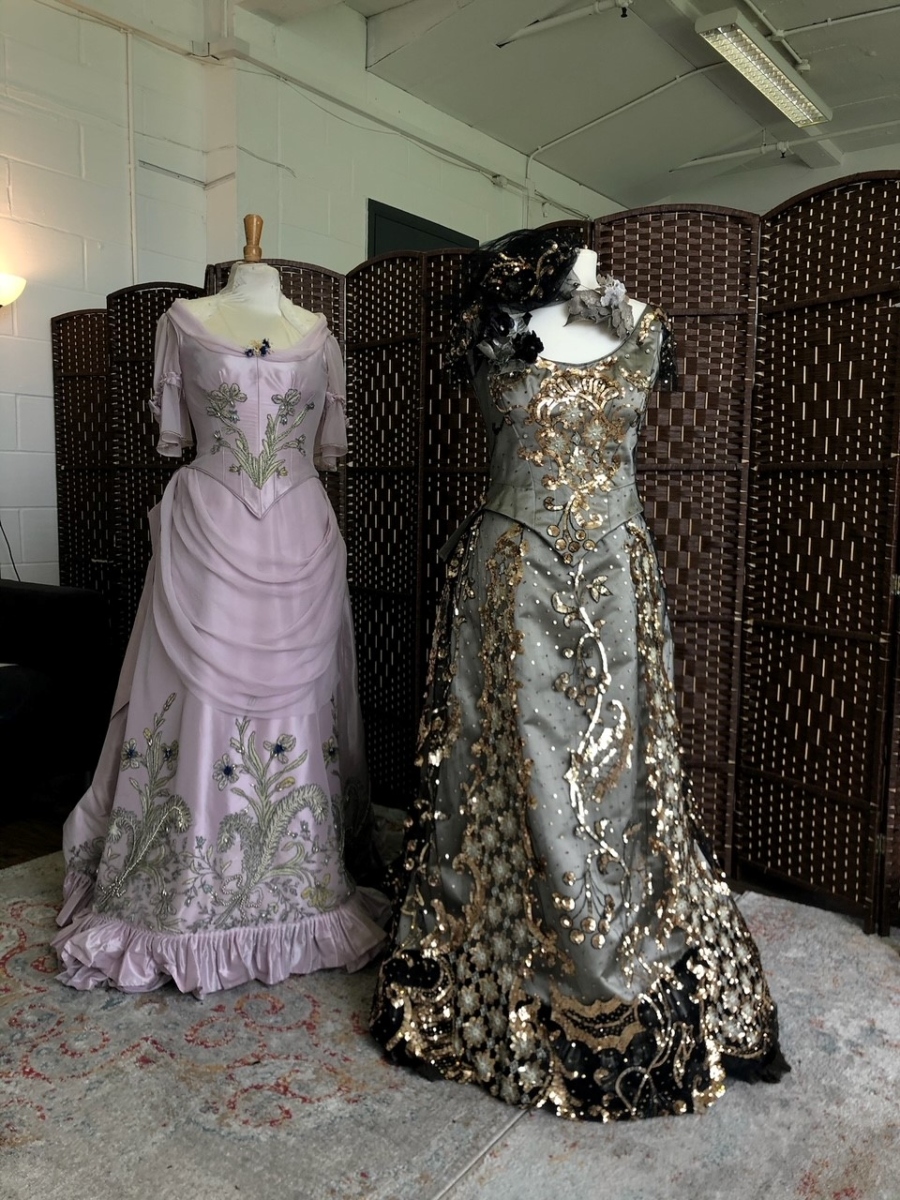
BTL: What are the contrasts between the film stars and the Downton world?
Robbins: Maja and I wanted to make sure we were bringing in new strata of civilians from the world. We looked at knitwear, and separates instead of three-piece suits, which made them film more relaxed. I’ll let Maja talk about it more, but it was really about creating a big personality for these people.
BTL: How many costumes did you do for this film?
Robbins: I mean, in total, thousands, because of the supporting cast. But we constructed 300 garments or outfits from scratch, without counting what we bought or used straightaway. The scale of Downton is huge — about 25 main cast, and 24 story days.
Meschede: I did a lot! For Laura, 15, [while] Dominic had four different suits, plus a croquette outfit. And then about 10 costumes for Hugh. That is, as Anna said, without counting all the other ones we got from vintage stores, etc.
BTL: What was the collaboration process like?
Meschede: Anna and I worked really closely together. We were together every day for several months. It’s very important that the color palette of each character fits in some way with the others. We worked very closely with Simon, our director. It was really good, and exciting [being] the new one, working on the new characters, bringing my own different view into the Downton family.
Focus Features will release Downton Abbey: A New Era in U.S. theaters on Friday, May 20.





